When Winston Churchill ordered the formation of Britain’s first parachute units in June 1940, the order covered Empire and Commonwealth forces, including the Indian Army. Things did not start well.
Just like the raising of airborne forces in the UK, the raising of Indian airborne forces had a troubled birth; and doubly so as the war effort in Europe and North Africa sucked in all the resources available and the war with Japan played second-fiddle – it was not called the Forgotten War for nothing.
General Sir Robert Cassels GCB GCSI DSO, Commander-in-Chief, India authorised the raising of three parachute battalions in December 1940 only to receive a note from the War Office advising him to delay as the whole future of Airborne Forces was in question.
Students of British Airborne Forces history will be aware of the shenanigans that surrounded the raising of Airborne Forces. Fortunately, Cassels decided to ignore the War Office and carry on regardless.
The C-in-C India was supported by the Viceroy who said: “I believe that India might do a really big thing by going ahead on her own, developing an airborne force that might turn the scale anywhere in these countries of open spaces, great distances and relatively weak forces at any one point.”.
Modern-day India is a huge country but at the time of WW2, in pre-partition days, it comprised the land mass of India and the future states of Pakistan and Bangladesh, formerly East Pakistan. Travel across such a vast area by boat, train and road could be a very long and arduous.
The 50th (Indian) Parachute Brigade was formed in Delhi and by October 1941 comprised the following units: Brigade Headquarters; 50th (Indian) Parachute Brigade Signals Section; 151 Parachute Battalion; 152 (Indian) Parachute Battalion; 153 (Gurkha) Parachute Battalion; 411 (Royal Bombay) Parachute Section Indian Engineers.
Just like in the UK the new airborne forces promised the possibility of action rather than, in India, frontier and garrison duties. The 151 was made up of volunteers from 23 infantry battalions across India. The 152 was unusual in being the first Battalion in India to have Hindus and Muslims mixed in the same unit.
15th October 1941 saw the first jumps at the Air Landing School in Karachi (some 1000 odd miles from Delhi in what is now Pakistan). Whilst nobody was killed it resulted in the Chief Instructor and Captains Abott and Hopkinson being injured.
February 1942 saw the first drop of a stick (from a Valentia!) on an exercise. Of the 10 men dropped 1 was killed and 1 seriously injured.
In October 1942 Cambellpore and Chaklala (both near Rawalpindi in the Punjab, now part of Pakistan), some 500 miles north of Delhi, became the new homes for the Brigade and the Air Landing School.
It was just before this move that the 151 parachute Battalion departed for the Middle East to become part of the 4th Parachute Brigade and renaming as the 156 Parachute Battalion. They were replaced by a Gurkha Rifles battalion who became the 154 Parachute Battalion in due course.
And finally, 215 Squadron RAF arrived with Dakotas to replace the Valencias, Hudsons and Lodestars currently in use.
Unfortunately, the casualty rate amongst Indian airborne forces continued to be far higher than in the UK and the now famous Wing Commander Maurice Newnham was sent to India to study the problem. Improvements in training and parachute packing brought matters back under control.
As you may expect the men who volunteered for, along with the Gurkhas, made for some interesting characters and situations:
In one incident a Valencia full of Gurkhas crashed on the runway during take-off. Nobody was hurt. The Gurkhas disemplaned, marched down the runway and promptly got into another aircraft to complete their first experience of flying in an aircraft.
Captain Dicky Richards during an exercise took with him his hunting rifle and fishing equipment. As the men formed up for the exercise so he disappeared in the opposite direction for some hunting and fishing.
The Gurkhas who were concerned that the height of the drop was too high and that they should drop from a lower altitude. Once it was explained to them that they would be wearing parachutes when they dropped they were satisfied that the height was acceptable.
Just like their counterparts in England, the paratroopers and their officers were disappointed by cancelled operations, took part in exercises, were involved in some security operations and local actions involving small numbers of the Brigade, though they hadn’t been involved in serious action like North Africa, Sicily and Italy.
And so it came to pass that their commanding 0fficer, Brigadier Julian Hope-Thompson arranged for his men to be deployed to the Assam region for what was described as jungle warfare training and aggressive patrolling in the area of the India/Burma border. They felt that this was their best chance of seeing some action.
The journey of 1900 miles was made by boat, train and rail and took two weeks. By late February/early March the Brigade was settling into the area south east of Kohima.
At this point the Brigade consisted of:
- Brigade Headquarters
- 50 Indian Parachute Brigade Signals Section
- 152 Indian Parachute Battalion
- 153 Gurkha Parachute Battalion
- Medium Machine Gun Company
- 411 (Royal Bombay) Parachute Squadron Indian Engineers.
- 80 Parachute Field Ambulance
The 154 Parachute Battalion was still completing its training and was left behind in Rawalpindi.
I have relied heavily on Airborne Forces by Lt Colonel Otway DSO. Otway is most famous for his role in the storming of the Merville Battery on DDay. In 1947 he was the GSO 1 for the 2nd Indian Airborne Division.
Source:
Written by by John Gerring Hon. Sec. Arnhem Fellowship and Prosper Keating Editor of Hermes, the PRA magazine.
Read More
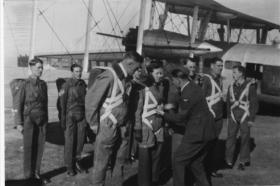
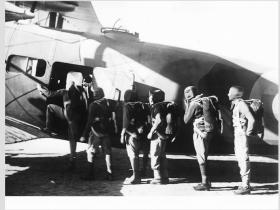
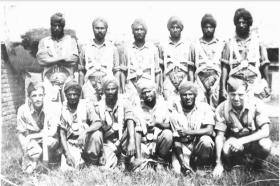
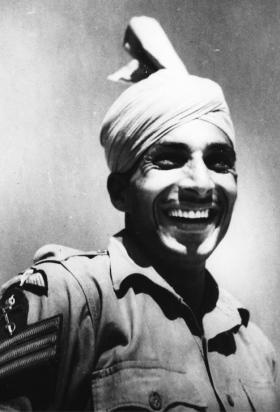
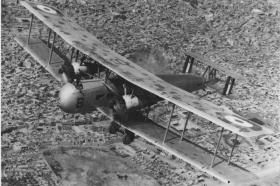




Latest Comments
There are currently no comments for this content.
Add Comment
In order to add comments you must be registered with ParaData.
If you are currently a ParaData member please login.
If you are not currently a ParaData member but wish to get involved please register.